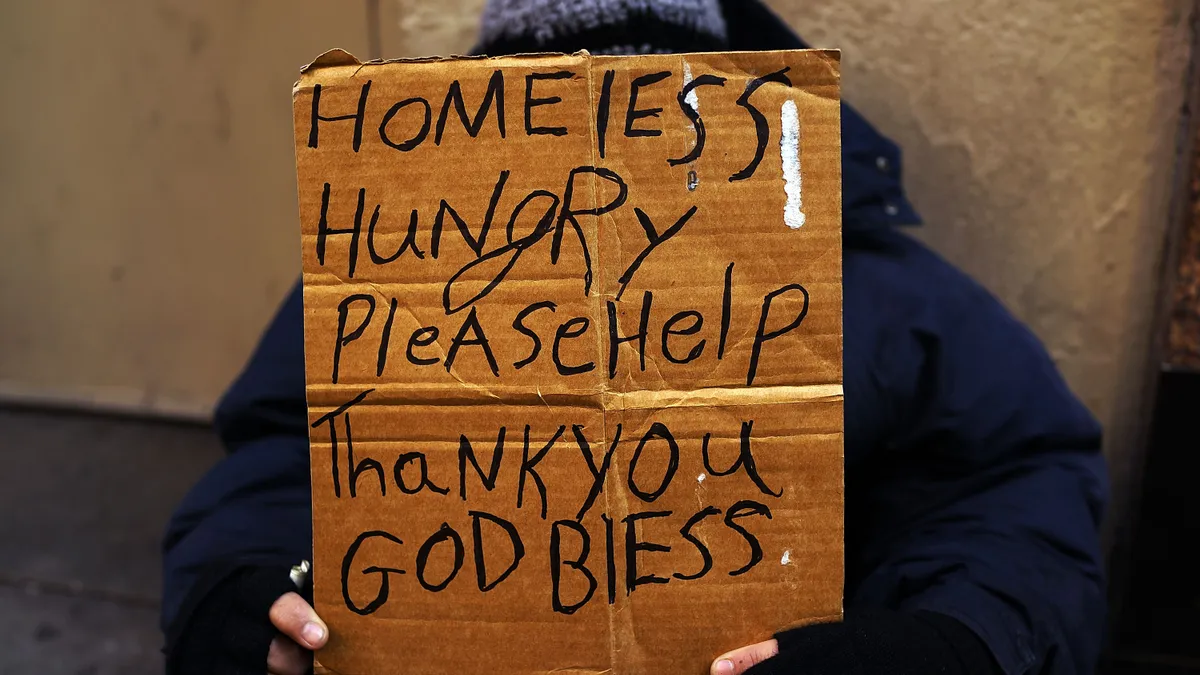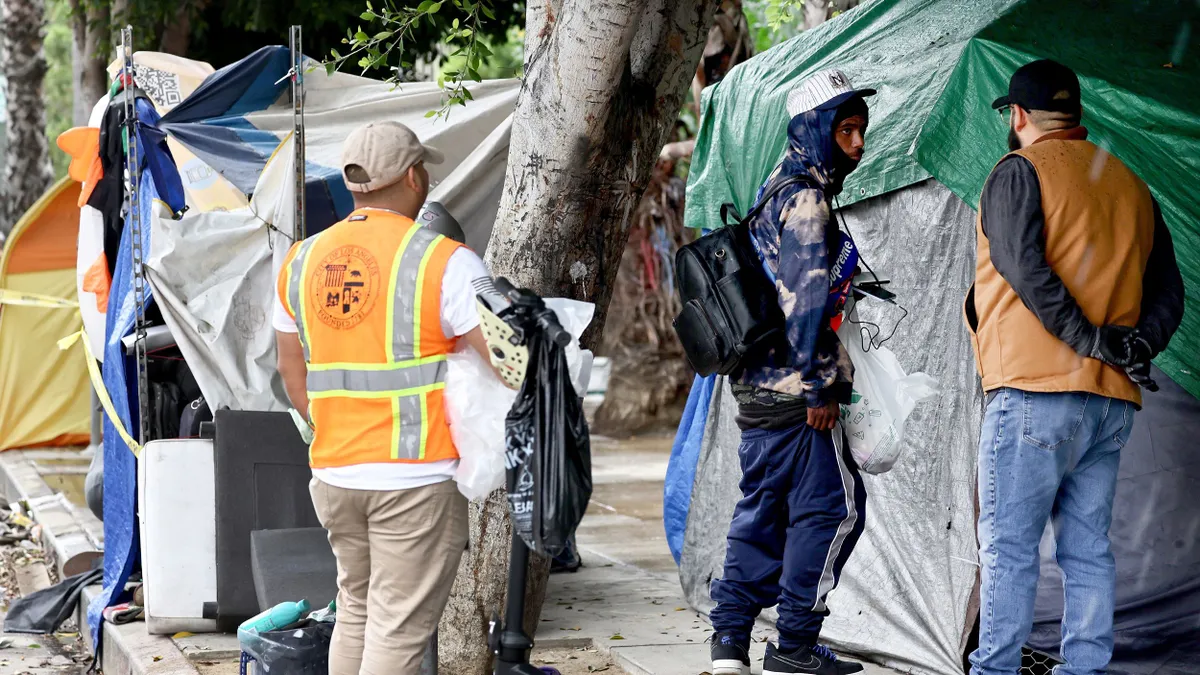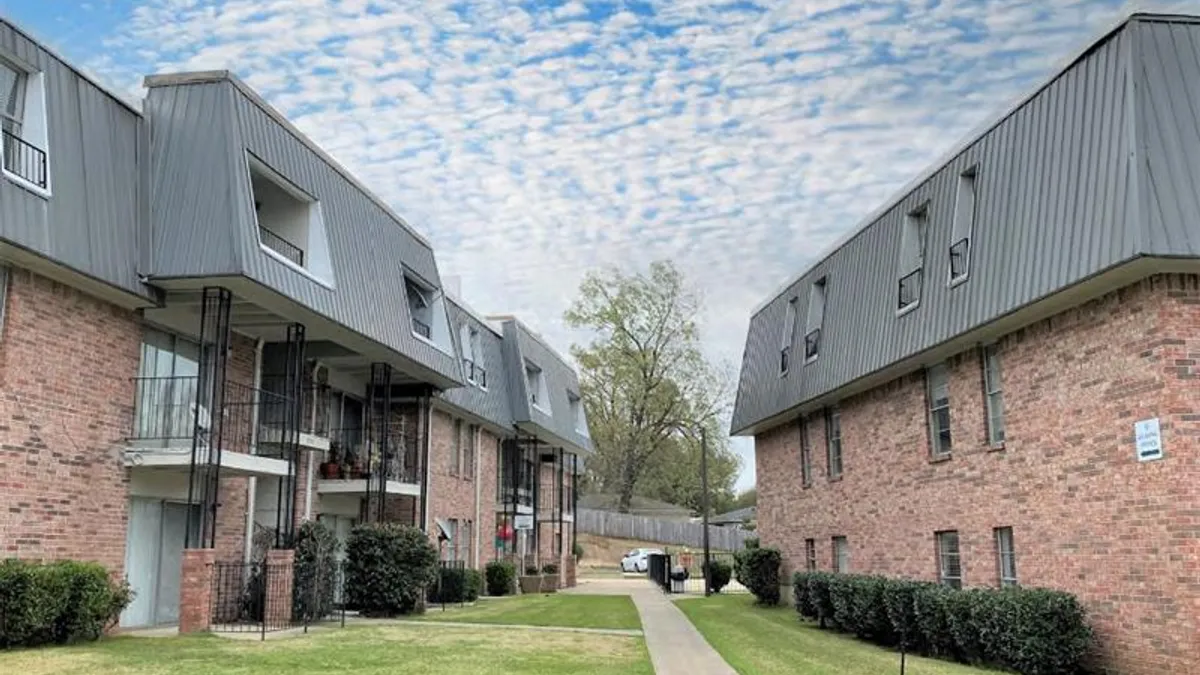The city of Austin, Texas, launched a multi-departmental team last month to streamline and bring greater consistency to how it handles homeless encampments in public spaces.
The Homeless Encampment Management Team and a new digital, data-driven encampment tracking tool will prioritize responses for encampment cleanups.
Last year, the first federal study on homeless encampments found that people live in encampments mostly due to a lack of affordable housing and barriers to entry to shelter systems. It also concluded that diverse sets of partners, not lone city departments, clear encampments while offering occupants supportive services.
Collaborative solutions, like Austin’s, are the best way to help, said Steve Berg, vice president for policy and programs at the National Alliance to End Homelessness.
“To be effective at all, the response has got to be coordinated,” Berg said. “The idea that individual agencies in a city government will have their plan for dealing with encampments is never going to work.”
The tracking tool is equipped with geospatial visualization capabilities and will give the response team a better understanding of the conditions, risks, needs and trends at encampments across the city. The tool will help the staff score each encampment and identify those posing the highest health and safety risks, prioritizing them for cleanup and supportive service deployment for occupants. The city budgeted nearly $5 million in 2023 to clean up encampments.
Filling a growing need
In 2021, the city recognized a marked increase in the need for a cross-departmental response to encampments, said Chrisola Webb, City of Austin Homeless Strategy Division spokesperson.
For the first year of the pandemic, Austin followed the Centers for Disease Control and Prevention’s guidance to let unsheltered individuals remain in place to stop the spread of COVID-19 and prevent individuals from losing contact with service providers. During that time, Austin concentrated on collecting trash around encampments and providing occupants access to food, personal protective equipment such as masks and gloves, restrooms and hand-washing stations, Webb said.
Austin launched an initiative last year, the Homeless Encampment Assistance Link, to relocate people living in encampments to temporary housing and connect them with housing resources; the city then removes encampment structures and debris. Voters in Austin also approved Proposition B last year, making camping in public spaces a criminal offense, and a similar measure became law in Texas.
These factors contributed to city staff becoming overwhelmed with demand last year, underscoring the need for a clear strategy to address individuals who are unsheltered, Webb said. More than a dozen departments came together in November 2021 to launch a cross-departmental effort for encampment management.
Addressing health and safety risks with housing
Unsheltered homelessness frequently creates health and safety concerns for individuals without housing and the community. Adopting a “housing first” strategy that prioritizes getting people living on the street into stable, secure housing is a best practice for reducing encampments and their community impact, Berg said.
“The goal is not to make people disappear; the goal is to get people into housing,” he said. Supportive services like mental health care are more effective for people in stable housing, Berg said.
People who are unsheltered are at exceptionally high risk for illness and death due to weather exposure and often become victims of crime, he said.
The cost to communities can be high, too. For instance, unsheltered individuals use emergency rooms as their primary health care, he said. Trash and human waste — sometimes left around encampments — are also hazardous.
Safety along high-traffic corridors is another issue cities must address. Portland, Oregon’s latest Vision Zero report indicates that people experiencing homelessness made up 33% of traffic deaths and 70% of pedestrian deaths. Encampments also pose a danger to pedestrians that walk into roadways to get around blocked sidewalks. Last month, Portland Mayor Ted Wheeler expanded his emergency declaration prohibiting encampments along high-crash corridors to include key walking routes to K-12 schools.
Big picture
Austin’s HEMT and the Homeless Emergency Management Tracking and Prioritization Tool are just part of the city’s homelessness mitigation efforts, which center on “expanding access to permanent housing and services that end a household’s episode of homelessness,” Webb said. Austin dedicated nearly $107 million in American Rescue Plan Act funding to the Finding Home ATX community initiative that aims to house 3,000 people and create 1,300 new affordable housing units by the end of 2024, Webb said.
Austin’s HEM tool will inform short-term responses and track encampments’ scores over time. Staff members expect to see a drop in the number of unhoused individuals and the health and safety risks in the remaining encampments, Webb said.
It will be an “ongoing effort that will take some time, as will the development of full protocols, communication workflow and additional staff training resources,” she said.



















